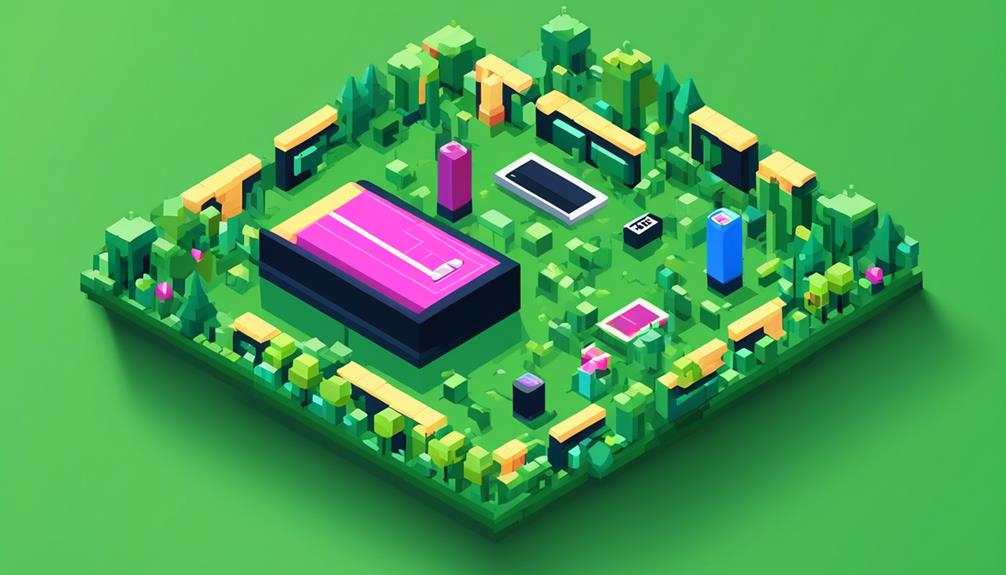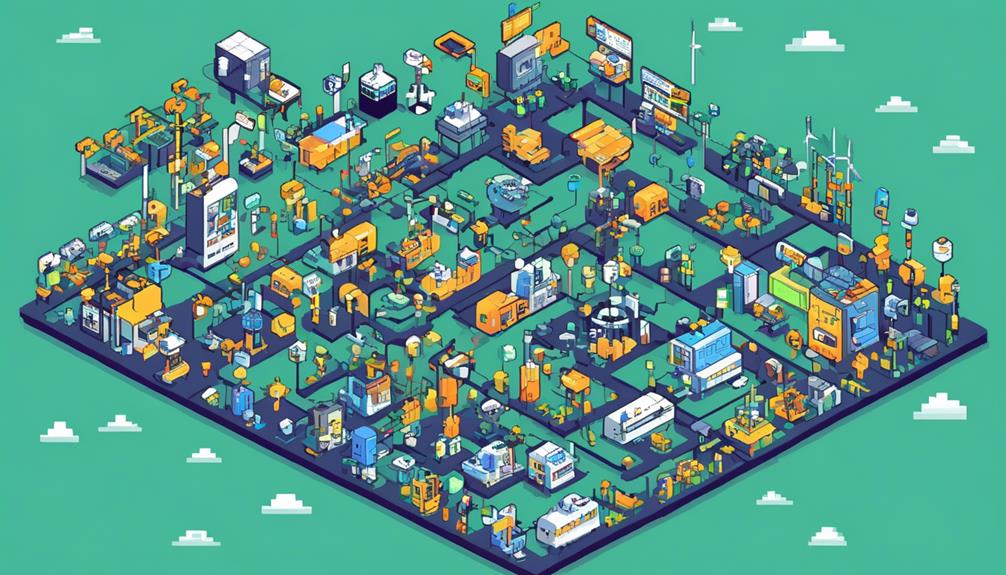Powering IoT devices is a critical concern in today's technological landscape. With the increasing demand for interconnected devices, the limitations of traditional battery usage have become apparent. Batteries have finite energy capacity, and their size and cost constraints can impact the longevity of IoT products. Moreover, the need for battery replacement in remote or hazardous locations can be both expensive and environmentally unfriendly.
However, there is hope on the horizon. Energy harvesting technologies are emerging as viable solutions for powering IoT devices. By harnessing energy from the environment, such as light, movement, and temperature differences, these technologies offer the potential for maintenance-free and perpetually powered IoT devices. This opens up a whole new realm of power source options and reduces reliance on batteries.
But how do these energy harvesting techniques work, and what are the challenges involved in managing the power needs of IoT devices? Let's explore further.
Key Takeaways
- Limited energy capacity of batteries impacts longevity and cost of IoT devices
- Solar energy harvesting using efficient solar panels can provide a sustainable power source for IoT devices
- Battery storage capacity must meet energy requirements throughout the operational lifespan of IoT devices
- Kinetic energy harvesting solutions, such as vibration-powered energy harvesting, can supplement power supply and reduce reliance on batteries or waste heat
Battery-Powered Iot Devices

Battery-powered IoT devices are reliant on limited energy resources for their operation. As the Internet of Things (IoT) expands, the need for efficient and sustainable power solutions becomes increasingly important. The powering of IoT devices is a critical aspect that must be carefully considered to ensure reliable and long-lasting operation.
One of the main challenges faced by battery-powered IoT devices is the limited energy capacity of batteries. The size and cost constraints of batteries often result in restricted power availability, impacting the longevity and cost of IoT devices. Battery replacement in hard-to-reach locations can be costly and challenging, making it essential to optimize power consumption and maximize battery life.
Moreover, the environmental impact of discarded batteries is a growing concern. The disposal of batteries contributes to electronic waste and poses risks to the environment. To address these challenges, alternative energy solutions such as energy harvesting offer potential for perpetually powered and maintenance-free IoT devices.
Energy harvesting involves capturing and converting ambient energy sources such as solar, kinetic, or thermal energy into electrical power. This technology enables IoT devices to operate without relying solely on batteries or external power sources. By harnessing energy from the surrounding environment, these devices can be self-sustaining, reducing the need for frequent battery replacements and minimizing their environmental footprint.
Efforts are underway to develop more energy-efficient IoT devices that consume minimal power while delivering optimal performance. Additionally, advancements in battery technology, such as the development of high-capacity and long-lasting batteries, are being explored to enhance the powering of IoT devices.
Solar Energy Harvesting for Iot
Solar energy harvesting plays a crucial role in powering IoT devices by utilizing solar panels to convert sunlight into electrical energy.
The efficiency of these solar panels is a key consideration, as it determines the amount of energy that can be harvested.
Additionally, the capacity of the battery used to store the harvested energy is important to ensure a continuous and reliable power supply for the IoT devices.
Solar Panel Efficiency
The efficiency of solar panels plays a pivotal role in the successful harvesting of solar energy for IoT devices.
Solar panel efficiency refers to the ability of solar cells to convert light energy into electric power.
It determines the power output and sustainability of energy sources for IoT systems.
Different types of solar cells have varying efficiencies, with amorphous silicon cells being more efficient at harvesting visible light and crystalline cells excelling in the red and near infra-red spectrum.
The efficiency of solar panels is crucial for meeting the power requirements of IoT devices, especially in indoor settings where light conditions may vary.
Advancements in solar panel materials and technologies have enabled the utilization of various energy sources and improved power management in IoT systems.
Achieving higher solar panel efficiency ensures a more reliable and sustainable power source for IoT devices, enhancing their overall performance and power density.
Battery Storage Capacity
The storage capacity of batteries plays a critical role in the successful implementation of solar energy harvesting for IoT devices. As the number of IoT devices continues to grow, the demand for efficient and long-lasting battery storage becomes increasingly important. When it comes to powering IoT sensors, battery storage capacity must meet the energy requirements of the devices throughout their operational lifespan.
To address this challenge, various energy harvesting methods have emerged, including electromagnetic energy harvesting, kinetic energy harvesting, and vibration energy harvesters. These methods can help supplement the power supply of IoT devices, reducing the reliance on traditional battery storage.
Kinetic Energy Harvesting Solutions

Kinetic energy harvesting solutions offer a promising approach to power IoT devices.
One such solution is vibration-powered energy harvesting, which harnesses the energy generated by vibrations to generate electricity.
Another approach is motion-based energy generation, where the movement of the IoT device itself is used to generate power.
These self-powered IoT sensors can greatly enhance the efficiency and reliability of IoT systems by eliminating the need for external power sources.
Vibration-Powered Energy Harvesting
Vibration-powered energy harvesting is a promising method for converting kinetic energy from movement into electrical power to sustain IoT devices. This innovative approach offers a potential solution for powering IoT applications without the need for batteries or external power sources. Here are three key points to consider:
- Methods of vibration energy harvesting: Techniques such as electromagnetic induction, piezoelectric effect, and electrostatic and triboelectric effect are commonly used to capture mechanical energy and convert it into electrical power.
- Power output and reliability: The level of acceleration directly affects the power generation capability of vibration energy harvesters. The power output can vary, impacting the reliability and consistency of energy generation.
- Suitability for different applications: Vibration energy harvesters come in various sizes, costs, and scalability levels, making them suitable for different IoT solutions. Their ability to provide power without maintenance aligns with the goals of digital transformation and reducing reliance on batteries or waste heat.
Motion-Based Energy Generation
Motion-based energy generation, also known as kinetic energy harvesting solutions, presents an alternative method for converting movement into electrical power to sustain IoT devices. It builds upon the concept of vibration-powered energy harvesting. While vibration energy harvesting predominantly utilizes electromagnetic induction to generate power, motion-based energy generation incorporates different methods such as impact harvesters, piezoelectric generators, and rotational harvesters.
These approaches offer a wider range of options for generating power from kinetic energy. For instance, impact harvesters convert the mechanical energy from impacts into electrical energy. Piezoelectric generators harness the piezoelectric effect to generate power from mechanical strain. Rotational harvesters, on the other hand, convert rotational motion into electrical energy.
Self-Powered Iot Sensors
Self-powered IoT sensors can be achieved through the implementation of kinetic energy harvesting solutions, which convert movement into electrical power. These solutions utilize various energy-harvesting technologies to efficiently generate electrical energy from motion.
Here are three key points about self-powered IoT sensors:
- Electromagnetic induction, piezoelectric effect, and electrostatic and triboelectric effect are commonly used methods for energy conversion.
- Light intensity variations and solar cell efficiency play a crucial role in the effectiveness of light as a power source for IoT sensors.
- Kinetic energy harvesting allows for maintenance-free and perpetually powered IoT devices, reducing the need for frequent battery replacements.
Triboelectric harvesting, a form of kinetic energy harvesting, offers advantages such as low cost, high durability, flexibility, and scalability for generating power for IoT sensors. By harnessing the power of motion, self-powered IoT sensors can operate at low power and provide a reliable voltage output for a wide range of applications.
Radio Wave Energy Harvesting for Iot

Radio wave energy harvesting for IoT involves the collection of ambient radio frequency signals in the environment to power IoT devices, providing a sustainable and perpetual energy solution without the need for direct power supplies or conventional energy sources. This method utilizes the piezoelectric effect, where certain materials generate an electric charge when subjected to mechanical stress or vibrations. By converting the energy of radio waves into electrical energy, IoT devices can be powered without relying on batteries or external power sources.
Radio wave energy harvesting offers several advantages for IoT devices. Firstly, it enables devices to operate continuously without the need for frequent battery replacements, reducing maintenance costs and environmental impact. Additionally, it expands the range of power source options available for IoT devices, contributing to the development of maintenance-free and perpetually powered IoT systems.
The amount of energy that can be harvested from radio waves depends on various factors such as the strength of the radio signals and the efficiency of the energy conversion process. The output power of a radio wave energy harvesting system is typically low, ranging from microwatts to milliwatts. However, advancements in materials and technologies have improved the efficiency of energy conversion, allowing IoT devices to be powered by relatively low levels of radio wave energy.
Radio wave energy harvesting has found applications in various IoT devices, including wireless sensors, smart meters, and wearable devices. These devices use the harvested energy to power their operations, eliminating the need for external power supply or battery replacements. By leveraging the abundance of radio waves in the environment, radio wave energy harvesting offers a promising solution for powering IoT devices sustainably and perpetually.
Heat Energy Harvesting Techniques
The field of energy harvesting for IoT devices extends beyond radio wave energy, with heat energy harvesting techniques emerging as a viable alternative for sustainable and perpetual power solutions. These techniques involve the collection of energy from temperature differentials in the environment. One commonly used method is through the use of thermoelectric generators (TEGs).
Here are some key points about heat energy harvesting techniques:
- Thermoelectric generators (TEGs): TEGs are devices that can convert thermal energy into electrical energy. They operate based on the principle of the Seebeck effect, where a temperature difference across a thermoelectric material generates a voltage. TEGs can be used to harvest heat energy from various sources such as industrial processes or the ambient environment.
- Challenges in implementing TEGs for IoT: The implementation of TEGs for IoT applications poses certain challenges. These include electrical and thermal contact resistances, which can affect the efficiency of energy conversion. Additionally, the design and architecture of TEG devices need to be carefully optimized to maximize power output.
- Integration with other energy harvesting technologies: To enhance overall energy harvesting capability for IoT applications, TEGs can be integrated with other energy harvesting technologies such as solar or vibration energy harvesting. This combination allows for the simultaneous collection of energy from multiple sources, increasing the availability of power for IoT sensor nodes.
Advancements in nanotechnology and material science hold promise for the development of more efficient and cost-effective TEG devices. The miniaturization of IoT devices and the use of different materials can lead to improvements in TEG performance, making them suitable for low power applications and enabling the collection of energy from even small temperature differentials.
Heat energy harvesting techniques have the potential to provide sustainable and perpetual power solutions for the growing IoT ecosystem.
Power Management Challenges in Iot Devices

Power management in IoT devices presents numerous challenges due to limited energy availability, cost constraints, and the environmental concerns associated with traditional battery-powered solutions. IoT devices require a constant and reliable power source to function optimally. However, the use of batteries to power these devices is often problematic. The limited energy capacity of batteries, coupled with the cost prohibitive nature of replacing them in hard-to-reach or hazardous locations, poses difficulties in power management. Additionally, the environmental footprint of discarded batteries raises concerns, as their improper disposal can lead to pollution and harm to ecosystems.
To overcome these challenges, electrical engineers and researchers have been exploring alternative energy solutions for powering IoT devices. One promising approach is the use of energy harvesting technologies, which offer the potential for maintenance-free and perpetually powered IoT devices. Energy harvesting involves capturing and converting ambient energy from the surrounding environment into electrical power. This opens up a wide range of power sources, including light, movement, and temperature differences.
To provide a visual representation of power management challenges and potential solutions in IoT devices, the following table outlines the key considerations:
| Challenge | Solution | Benefits |
|---|---|---|
| Limited energy availability | Energy harvesting technologies | Maintenance-free operation, perpetual power |
| Cost constraints | Energy harvesting technologies | Cost-effective, no need for frequent battery replacements |
| Environmental concerns | Energy harvesting technologies | Reduced carbon footprint, no hazardous battery waste |
Frequently Asked Questions
What Is the Power Source for Iot Devices?
The power source for IoT devices can vary depending on the specific application and requirements. Common power sources include:
- Renewable energy
- Battery technology
- Energy harvesting
- Wireless charging
- Power over Ethernet
- Solar power
- Energy efficient designs
- Energy storage solutions
- Grid integration
These power sources enable IoT devices to operate efficiently and sustainably. By utilizing renewable energy and implementing energy efficient designs, IoT devices can reduce their environmental impact while still maintaining reliable power sources.
Additionally, energy harvesting technologies offer the potential for maintenance-free and perpetually powered IoT devices.
What Are the Solutions of Iot in Energy Industry?
Energy solutions in the IoT industry encompass a range of strategies to address power consumption and efficiency. These include:
- Adoption of energy efficient technologies
- Integration with renewable energy options
- Smart grid integration for optimized power distribution
- Battery life optimization techniques
- Energy harvesting techniques to capture ambient energy
- Power management solutions for efficient usage
- Wireless charging technologies
- Energy monitoring and control systems
- Implementation of sustainable energy practices
These solutions enable IoT devices to operate reliably, sustainably, and with minimal environmental impact.
How Are Iot Devices Powered?
IoT devices can be powered through various methods, including battery power, solar power, and energy harvesting.
Battery powered IoT devices are commonly used but require regular maintenance and replacement.
Solar powered IoT devices utilize solar panels to convert sunlight into electrical energy, offering a sustainable and renewable power source.
Energy harvesting involves capturing and converting ambient energy, such as light, movement, and temperature differences, into usable power.
Power management, energy storage solutions, and optimization techniques are employed to ensure energy efficiency and extend device lifespan.
Energy monitoring and control further enhance power management in IoT devices.
What Are Different Ways to Reduce Power Consumption on Iot Devices?
To reduce power consumption on IoT devices, various methods can be employed.
Energy efficient algorithms, power management techniques, and low power wireless communication protocols can optimize power usage.
Sleep modes can be implemented to conserve energy during periods of inactivity.
Energy harvesting methods, such as solar, kinetic, and heat, can supplement power sources.
Battery optimization techniques, dynamic voltage scaling, power gating, and energy efficient hardware design can further enhance power efficiency on IoT devices.

